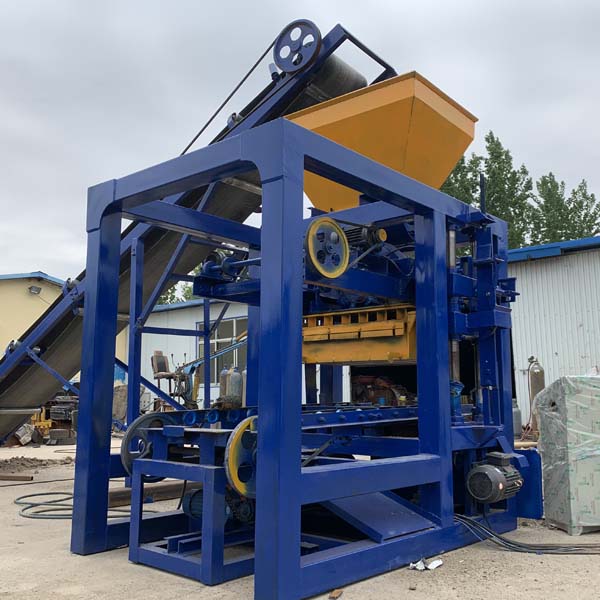
In the realm of modern construction, innovation and technological advancements have continually pushed the boundaries of what is possible.
One such innovation that stands at the forefront of revolutionizing construction practices is the automated brick-making machine.
This remarkable piece of engineering combines precision, speed, and sustainability to reshape the way bricks are manufactured and utilized in the construction industry.
In this essay, we will delve into the various aspects of this revolutionary technology, exploring its design, benefits, potential challenges, and the overall impact it has on construction practices.
Design and Functionality
The ultimate automated brick-making machine represents the pinnacle of engineering prowess, bringing together a blend of robotics, mechanics, and digital control systems.
At its core, the machine is designed to automate the entire brick-making process, from raw material input to the final product.
The machine operates through a series of precisely orchestrated steps, eliminating the need for manual labor and significantly reducing the margin of error.
The process begins with the feeding of raw materials such as clay, sand, and binding agents into the machine’s hoppers.
These ingredients are accurately measured and mixed to create a homogenous mixture, ensuring the consistency and quality of each brick produced.
The mixture is then fed into molds, where hydraulic presses exert immense pressure to compact the material into brick forms.
Once molded, the bricks are transferred to automated drying chambers, where controlled heat and airflow facilitate efficient drying without compromising structural integrity.
The final step involves the firing of bricks in kilns, a process that ensures their durability and strength.
Benefits of Automation
The introduction of the ultimate automated brick-making machine brings forth a multitude of benefits that transcend traditional brick-making methods.
Enhanced Precision: Automation eliminates human errors that may occur during manual brick production, resulting in bricks of consistent size, shape, and quality.
This precision contributes to better structural integrity and overall aesthetics in construction projects.
Increased Efficiency: Automated brick-making significantly reduces the production time compared to manual methods.
This accelerated production timeline allows construction projects to progress at a faster pace, potentially reducing overall project duration.
Labor Savings: By minimizing the need for manual labor in the brick-making process, the technology reduces dependence on a large workforce, leading to potential cost savings and allocation of labor to other critical tasks.
Resource Optimization: The automated process optimizes the use of raw materials, reducing waste and ensuring that each brick is produced with minimal environmental impact.
Consistency in Quality: The automated process ensures a consistently high standard of brick quality, which is essential for the durability and safety of constructed buildings.
Challenges and Considerations
While the automated brick-making machine presents numerous advantages, its implementation is not without challenges and considerations.
Initial Investment: The upfront cost of acquiring and installing automated brick-making machinery may be substantial, potentially posing a barrier to entry for smaller construction firms.
Technical Expertise: Operating and maintaining automated machinery require specialized technical knowledge.
Construction companies need to invest in training their workforce or hiring skilled personnel to manage and troubleshoot the technology.
Adaptation Period: Integrating automated processes into existing construction workflows may require an adjustment period.
Companies must be prepared to streamline their operations to fully capitalize on the benefits of automation.
Environmental Impact: While automation can reduce waste and optimize resource utilization, the energy consumption associated with operating automated machinery and firing kilns must be carefully managed to ensure a net positive environmental impact.
Impact on Construction Practices
The ultimate automated brick-making machine has far-reaching implications for construction practices and the industry as a whole.
Speed and Efficiency: The increased production speed enabled by automation allows construction projects to progress at an accelerated pace.
This can be particularly advantageous for meeting tight deadlines and reducing overall project durations.
Architectural Freedom: With consistent brick quality and size, architects have greater freedom to design intricate and innovative structures that rely heavily on brickwork.
Labor Dynamics: The adoption of automated technology may reshape the labor dynamics within the construction industry.
While manual labor remains essential, there could be a shift towards a more skilled and technologically adept workforce.
Sustainability: Automation’s potential for optimized resource utilization and reduced waste aligns with the industry’s growing emphasis on sustainable construction practices.
Quality Assurance: The assurance of consistent brick quality contributes to safer, more durable, and aesthetically pleasing constructions, enhancing overall customer satisfaction.
The introduction of the ultimate automated brick-making machine marks a significant milestone in the evolution of construction practices.
By combining precision, efficiency, and sustainability, this technology has the potential to reshape the way bricks are manufactured and utilized in the construction industry.
While challenges such as initial investment and technical expertise must be navigated, the benefits, including enhanced precision, increased efficiency, and architectural freedom, are undeniable.
As the construction industry continues to embrace automation, it is clear that the ultimate automated brick-making machine is poised to revolutionize the way we build, paving the way for a more advanced, efficient, and sustainable future in construction.
